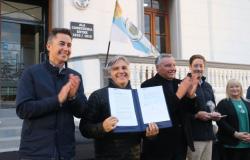The impact of the El Niño phenomenon in Colombia forced the country’s hydroelectric plants to reduce their energy production due to the significant decrease in the levels of their water reserves. This situation led to an increase in dependence on thermal plants to satisfy national energy demand, which in turn caused a notable increase in the consumption of natural gas for the generation of thermal energy.
From the beginning of 2024 to the present, an increase of 233% was recorded in the demand for natural gas for thermal generation. Specifically, from January 1, 2024 to April 20 of the same year, gas consumption for this purpose reached 46,051 GBTU (British Thermal Unit). This number contrasts with the same period of the previous year, in which consumption was 19,758 GBTU.
Now you can follow us on our WhatsApp Channel and in Facebook.
Luz Stella Murgas, president of Naturgas, indicated in this regard that “we have operated at full capacity to supply all the natural gas necessary for thermal generation, with 100% compliance with contractual obligations to support the firm energy commitments of the electricity sector. and an availability of additional gas to increase thermal generation.”
The increase in demand for natural gas is also evident in the maximum peak of daily consumption, which, as of April 20, 2024, stood at 614 GBTUDwhich reflected an increase of 188% compared to the 325 GBTUD recorded in the equivalent period of the previous year.
Murgas highlighted the crucial role of natural gas during this period of water scarcity: “Thanks to the fact that the natural gas infrastructure is much more prepared for this El Niño phenomenon, we have been able to provide support for electricity generation which, under normal hydrological conditions, is mostly 70% with water sources and, when there are times of drought, natural gas thermal plants provide backup to avoid any type of rationing.”
In this adverse climate scenario, natural gas, both that produced in Colombian territory and that imported, proved to be a safe and reliable energy alternative, especially for generation plants located in the Caribbean region.
The complementarity of gas sources has made it possible not only to satisfy current demand, but also to propose an effective contingency strategy against the climate emergency. This has guaranteed the energy supply and has avoided rationing that could affect the Colombian population.
The proposal to modify transportation rates in the National Transportation System (STN), suggested by Vanti SAESP and in the process of review by the Energy and Gas Regulation Commission (Creg), faced strong opposition from the leadership of La Guajira and the economic sectors of the Caribbean region.
The project, which bases its bases on an analysis carried out by the University of Los Andes and disseminated by the Creg, suggests a transformation in the charging structure for natural gas service, establishing a uniform cost at the national level, depending on the distance.
The implementation of this measure not only threatens to economically destabilize La Guajira, an important gas producing department, but would also negatively impact the rest of the Caribbean region, already punished by high energy rates.
Camilo José Ovalle Isaza, manager of Gases in La Guajira, expressed his alarm at the situation, pointing out the vulnerability of the population of the department, where 97% belong to the lowest socioeconomic strata (1, 2 and 3), presaging a increase in poverty and a brake on development due to increased costs.
“We would go from paying a rate of $1.18/KPC to $2.09/KPC in the transportation rate, this is an increase of 77%, while users in the interior of the country will benefit from a 23% reduction in this rate,” Ovalle warned.
The concern also extends to the repercussions that this rate change would have in sectors such as agroindustrial, salt mills and quarries, in addition to the impact on the Vehicular Natural Gas rate.






